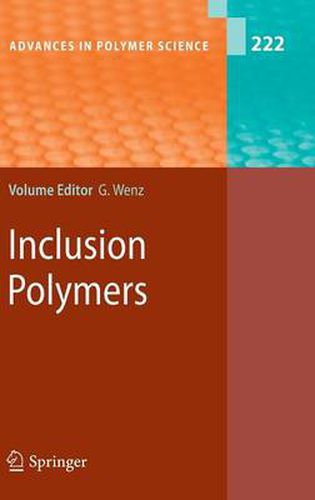Readings Newsletter
Become a Readings Member to make your shopping experience even easier.
Sign in or sign up for free!
You’re not far away from qualifying for FREE standard shipping within Australia
You’ve qualified for FREE standard shipping within Australia
The cart is loading…






This title is printed to order. This book may have been self-published. If so, we cannot guarantee the quality of the content. In the main most books will have gone through the editing process however some may not. We therefore suggest that you be aware of this before ordering this book. If in doubt check either the author or publisher’s details as we are unable to accept any returns unless they are faulty. Please contact us if you have any questions.
Since Hermann Staudinger coined the concept of macromolecules as covalently linked very large molecular entities in 1922, the main focus of ongoing research has been on the synthesis of polymers and copolymers leading to a great variety of stable, structural, and functional materials. On the other hand, during the last 15 years the knowledge about supramolecular self-organization of polymers with low molecular-weight compounds by reversible non-covalent interactions gained increasing attention. In particular, the interactions of cyclic molecules, called hosts, with polymersbecame increasingly attractive, since the propertiesof polymerssuch assolubilityor crystallinitycanbe alteredwithoutthe needof chemicalreactions. In contrast to regular polymersor copolymers,supramolecularstructurescomprisedof polymers and ring-shaped hosts are not totally stable. Therefore they can show p- grammable lifetimes or adapt speci?cally to different environments. In this respect polymeric supramolecular structures resemble living systems more than regular polymers. This volume is mainly devoted to a very fascinating class of ring-shaped cyclic ?(1?4) linked oligo-glucans, named cyclodextrins. Cyclodextrins are industrially produced from the renewable resource starch. They are especially suitable for the self-assembly of water based supramolecular structures, and they are highly b- compatible. Cyclodextrinsare able to complexboth monomersand polymerswhich offer suitable hydrophobic binding sites. The driving forces are mainly van der Waals and hydrophobic interactions. This complexation process is called inc- sion and the resulting supramolecular structures inclusion compounds. In addition, Chapter 6 of this volume is devoted to another interesting host, a cyclic urea c- pound called cucurbituril, which is able to recognize cationic guest molecules in aqueous solution.
$9.00 standard shipping within Australia
FREE standard shipping within Australia for orders over $100.00
Express & International shipping calculated at checkout
This title is printed to order. This book may have been self-published. If so, we cannot guarantee the quality of the content. In the main most books will have gone through the editing process however some may not. We therefore suggest that you be aware of this before ordering this book. If in doubt check either the author or publisher’s details as we are unable to accept any returns unless they are faulty. Please contact us if you have any questions.
Since Hermann Staudinger coined the concept of macromolecules as covalently linked very large molecular entities in 1922, the main focus of ongoing research has been on the synthesis of polymers and copolymers leading to a great variety of stable, structural, and functional materials. On the other hand, during the last 15 years the knowledge about supramolecular self-organization of polymers with low molecular-weight compounds by reversible non-covalent interactions gained increasing attention. In particular, the interactions of cyclic molecules, called hosts, with polymersbecame increasingly attractive, since the propertiesof polymerssuch assolubilityor crystallinitycanbe alteredwithoutthe needof chemicalreactions. In contrast to regular polymersor copolymers,supramolecularstructurescomprisedof polymers and ring-shaped hosts are not totally stable. Therefore they can show p- grammable lifetimes or adapt speci?cally to different environments. In this respect polymeric supramolecular structures resemble living systems more than regular polymers. This volume is mainly devoted to a very fascinating class of ring-shaped cyclic ?(1?4) linked oligo-glucans, named cyclodextrins. Cyclodextrins are industrially produced from the renewable resource starch. They are especially suitable for the self-assembly of water based supramolecular structures, and they are highly b- compatible. Cyclodextrinsare able to complexboth monomersand polymerswhich offer suitable hydrophobic binding sites. The driving forces are mainly van der Waals and hydrophobic interactions. This complexation process is called inc- sion and the resulting supramolecular structures inclusion compounds. In addition, Chapter 6 of this volume is devoted to another interesting host, a cyclic urea c- pound called cucurbituril, which is able to recognize cationic guest molecules in aqueous solution.